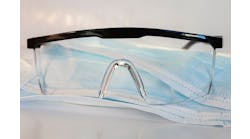I’ll come right out and say it: I’m pretty bad at hiring. Now, I’ve been blessed to make some great hires over the years, but, I assure you, it was not because I was intentional or systematic about it. In fact, I tend to hire like I lead—mostly from the gut. While this typically works out for me in most areas, hiring is not one of them. I’ve hired too quickly because I needed someone to fill a spot that I personally didn’t want to fill!
In many ways, I’m too trusting to be good at hiring. Some would even say I’m naive. If someone tells me something, I tend to believe them. And, I’m sure most of the time they believe it, too.
Saying you are “good with people” means something to me. It’s what I’ve built my career on, and is responsible for the long tenure of many of my employees. Evidently, it means something different to the many people who have used that phrase in an interview and who turned out to not really be all that “good with people” after all.
Jim Collins wrote in his book Good to Great that the goal in hiring is to get the right people on the bus and make sure they get into the right seat. Gino Wickman picked up on this theme and made it extremely practical in his book Traction, where he discusses the tactics to make this a reality. Both provide some great insight on the topic, so let’s explore what this might look like by breaking it down a bit further.
The wrong person on the bus
This is where I’ve personally gone wrong more times than I can count. The right person is someone who has the ability to do the job—or is willing and able to learn it—and fits the values, vision, and culture of your specific team. If there’s a misalignment on either skills or values, they are not the right person. This is especially difficult when the person is highly skilled and has years of experience to offer, but they do not fit the culture. When you’re hurting for talent in the shop, it can feel impossible to turn that potential hire down. Culture can be learned and taught and reinforced, but if the values differ out of the gate it simply will not work long term.
For instance, if your culture values a more collegial approach to getting things done like teamwork, discussion, and openness to new ideas but the candidate is clearly a “command and control,” more military-type leader, there will problems—and vice versa. I learned a long time ago that there is not one approach to leadership and many different styles can work.
The right person in the wrong seat
I’ve also experienced this. A classic way that I tend to make a blunder on this is by promoting people outside the area of their highest competency. Taking a rock star estimator and promoting them to the shop manager is one common example. Some estimators should just be estimators long term and reward them for that, as opposed to being promoted. Another example is taking a technician and trying to make them an estimator. They may have all the technical ability in the world and able to see everything needed to write the best repair plans, but if they don’t have the people skills to calm a distraught customer, then you may just be setting them up to fail.
Right person. Right seat.
This is not an exact science. But science, it turns out, can help. Assessing people with well-researched tests can provide a bit of a starting point. I have a friend who owns several restaurants and he gives all his prospective employees the Myers-Briggs personality assessment. There is only one profile out of 16 that he will hire for his store managers. He has learned through trial and error that to be a good store manager in his operation requires an extroverted person with good attention to detail, who is very rational and almost obsessive about closing loops. For those familiar with Myers-Brigg, this is the ESTJ profile.
As an entrepreneur and visionary, I am almost the exact opposite of that! Point is, there are plenty of buses and plenty of seats for everyone. It’s finding the right people for your bus and making sure they land in the right seat over time that matters.




